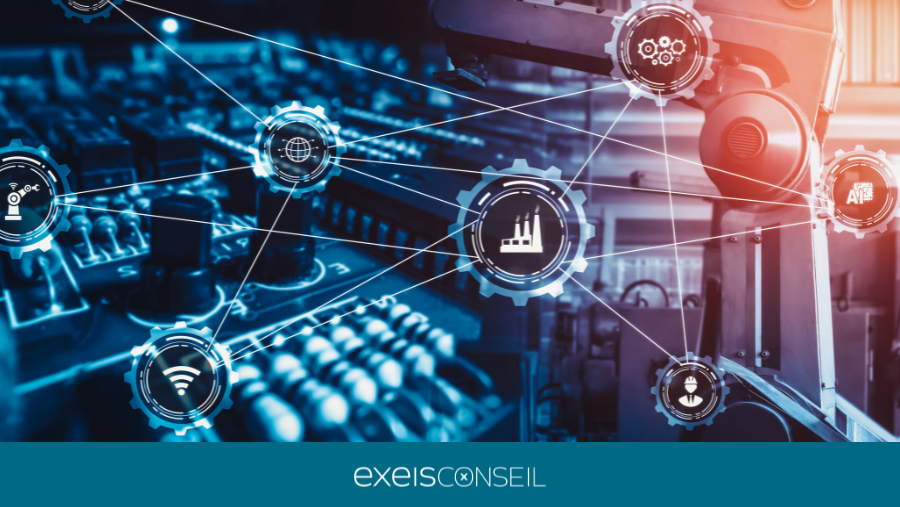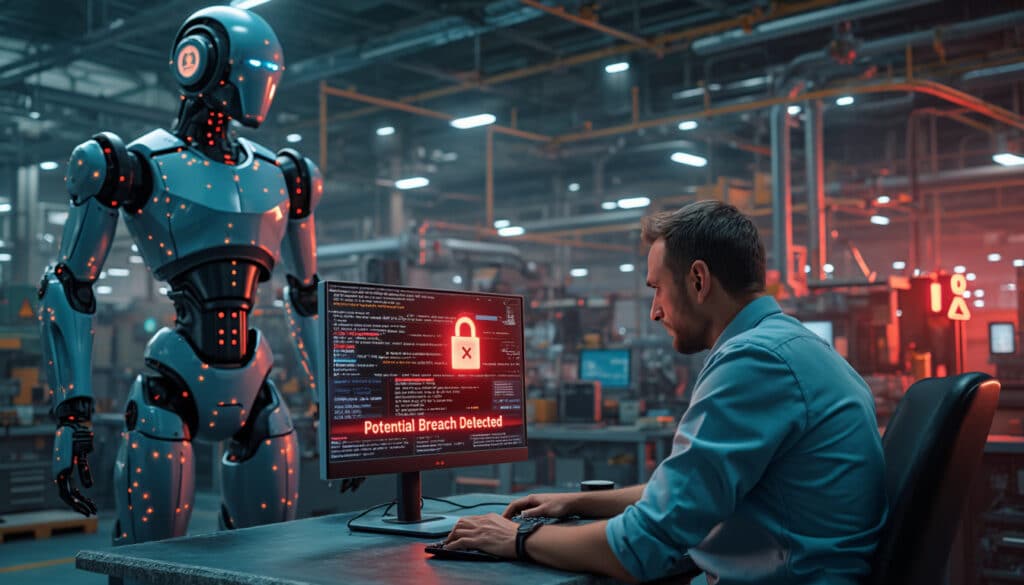
The rise of Industry 4.0 is redefining production chains with technological advancements such as Big Data, Cloud Technologies, and the Internet of Things (IoT). However, this digital transformation comes with new challenges, particularly in terms of cybersecurity. Production sites, once relatively protected, are now exposed to sophisticated cyber threats. This workshop focuses on understanding these threats, identifying vulnerabilities, and implementing effective strategies to respond in the event of an attack.

With the onset of the Industry 4.0 era, cyber threats are rapidly evolving, posing new and complex challenges for companies. This article explores the fundamental aspects of Industry 4.0 technologies, the associated risks, and proposes strategies to better identify and respond to these threats. It revolves around the challenges of industrial cybersecurity, cyber crisis management, integration of new technologies, and the need for a culture of resilience.
Table des matières
ToggleCore Technologies of Industry 4.0
Industry 4.0 is based on a strong convergence between Information Technology (IT) and Operational Technology (OT). Key technologies include Internet of Things (IoT), industrial 5G, Big Data, and Cloud Technologies. These innovations improve the efficiency and productivity of businesses while also making their systems more vulnerable to cyber attacks.
Operational Challenges of Industrial Cybersecurity
The transition to digital and interconnected systems exposes production sites to increased risks of cyber attacks. Historically somewhat shielded from attacks, industrial infrastructures now face growing threats. Companies need to implement robust strategies to protect their critical systems while maintaining operations in the event of an attack.
Cyber Crisis Management
Preparation and Tooling
Effective crisis management begins with careful preparation. Companies must develop incident response plans, train their staff, and invest in detection and remediation tools. This preparation is essential to limit the impacts of an attack and to ensure a rapid recovery of operations.
Training and Exercises
In addition to theoretical preparation, it is crucial to organize regular attack simulation exercises. These trainings allow teams to become familiar with crisis protocols and to identify weaknesses in their defense strategy. A culture of cybersecurity must be established within the organization to enhance overall resilience.
Identification of Cyber Threats
The identification of cyber threats is a key step for effective protection. Threats can vary: malware, denial-of-service attacks (DDoS), phishing, etc. Companies must continuously monitor their networks and systems to detect anomalies and respond swiftly. An in-depth understanding of OT and the specific technologies of each industry is crucial for developing suitable detection systems.
Responding Effectively to Threats
To respond effectively, it is essential to establish clear and well-defined procedures. Companies should equip themselves with incident response teams capable of acting quickly to neutralize threats. Collaborating with external cybersecurity experts can also enhance the organization’s response capacity. Strategies include regularly updating systems, applying security patches, and maintaining security conditions (MCS/MCO).
IT/OT Convergence: Challenges and Opportunities
The convergence between IT and OT poses significant challenges in terms of cybersecurity. The integration of these two worlds allows for better operations management and a new approach to industrial production through automation and data analysis. However, this interconnection also increases attack surfaces. Therefore, companies must adopt specific solutions to protect this convergence, particularly through strict network segmentation and continuous monitoring.
The Future of Security: Resilience in Cybersecurity
For effective resilience against cyber threats, it is essential for companies to develop a culture of cybersecurity and possess specific skills in OT. Resilience is not limited to protection against attacks, but also includes the ability to maintain operations in crisis situations, minimizing disruptions and ensuring the continuity of critical operations. A cybersecurity guide for industrial systems can provide valuable guidance for stakeholders in this sector, taking into account the specificities and needs of each company.
-
Core Technologies of Industry 4.0
- Big Data
- Cloud Computing
- Internet of Things (IoT)
- Industrial 5G
- Big Data
- Cloud Computing
- Internet of Things (IoT)
- Industrial 5G
-
Cybersecurity Challenges
- Protection of OT networks
- Threats related to IT/OT convergence
- Resilience of systems against cyber attacks
- Maintaining security status (MCS/MCO)
- Protection of OT networks
- Threats related to IT/OT convergence
- Resilience of systems against cyber attacks
- Maintaining security status (MCS/MCO)
-
Response Strategies
- Preparation of crisis management plans
- Advanced cybersecurity tooling
- Training the team in case of an attack
- Organizational cybersecurity culture
- Preparation of crisis management plans
- Advanced cybersecurity tooling
- Training the team in case of an attack
- Organizational cybersecurity culture
-
Securing the Future
- Understanding OT
- Adoption of new secure technologies
- Collaboration with cybersecurity partners
- Continuous assessment of emerging threats
- Understanding OT
- Adoption of new secure technologies
- Collaboration with cybersecurity partners
- Continuous assessment of emerging threats
- Big Data
- Cloud Computing
- Internet of Things (IoT)
- Industrial 5G
- Protection of OT networks
- Threats related to IT/OT convergence
- Resilience of systems against cyber attacks
- Maintaining security status (MCS/MCO)
- Preparation of crisis management plans
- Advanced cybersecurity tooling
- Training the team in case of an attack
- Organizational cybersecurity culture
- Understanding OT
- Adoption of new secure technologies
- Collaboration with cybersecurity partners
- Continuous assessment of emerging threats
📰Presse : Analyse de #Sandworm, une des menaces informatiques les + importantes, par @Jean_YvesMarion, professeur @Univ_Lorraine au #Loria dans cette enquête de @ploeizthms pour @Le_Figaro
— Loria (@labo_Loria) May 13, 2024
🛡️https://t.co/lQcgVaY7Bf#cybersecurite@CNRSinformatics @CNRS_Centre_Est @Inria_Nancy





